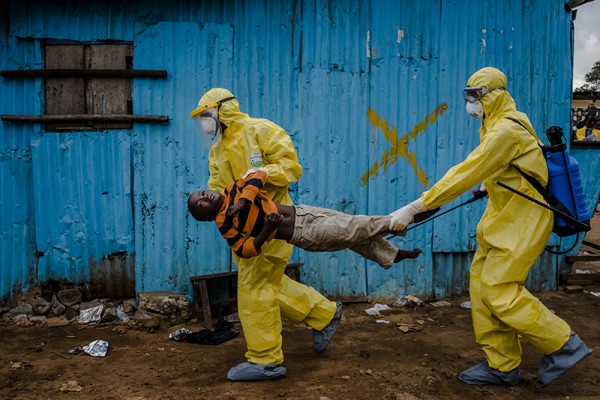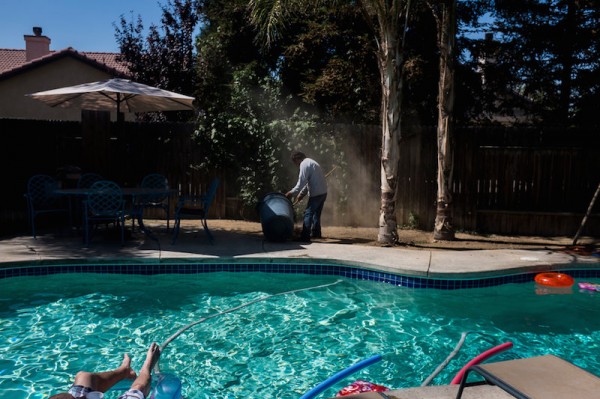Notes
A Preliminary Thought As We Enter Photojournalism Award Season
Undoubtedly, you’ve seen this photo before. It shows the body of a Liberian boy, James Dorbor, a victim of Ebola, being carried by health worker in Monrovia, Liberia, on September 4, 2014, it was taken by Daniel Berehulak for the New York Times. Athough the Picture of the Year, International (or POYi) awards, hosted by the U. of Missouri Journalism School, does not add names to winning photos until the entire contest is completed, the photo world knows it’s Berehulak’s photo that just earned an “Award of Excellence” in the “World Health” category. With more category winners about to be announced, and with World Press Photo results coming soon, my sense is that more recognition of this image will be coming Berehulak’s way.
It’s not a clear line, however, between the photo as a window and a testimony and its perception as a creative object and a professional document. I appreciate that a news photo deserves to be judged and valued as an industry artifact. I appreciate it that much more understanding how little other remuneration the field offers to even its most skilled practitioners. That said, however, as we recognize a photo like this as a winner, as an object of adulation, let us ever be mindful how much it’s born on young James’s soul.
(photo: Daniel Berehulak/The New York Times. Recent TIME caption: Medical staff carry James Dorbor, 8, suspected of having Ebola, into a treatment facility in Monrovia, Liberia. The reality and hysteria over Ebola is having a serious economic impact on Guinea, Liberia and Sierra Leone, three nations already at the bottom of global economic and social indicators. POYi contest caption: James Dorbor, 8, suspected to have Ebola, is rushed in by medical staff wearing protective clothing into the JFK Ebola treatment centre on September 05, 2014 in Monrovia, Liberia. James Dorbor, 8, had been sick and showing symptoms of Ebola for previous 3-4 days – extreme weakness, loss of appetite, toileting and vomiting. Edward, James father first took the boy to the S.O.S clinic, nearby for treatment, but being an ordinary hospital medical staff were too afraid to treat the boy. Edward then walked James to the JFK Ebola treatment facility nearby. That day the scene outside of the JFK was chaotic. One boy lay dead in the back of an ambulance, as three of his family members sat inside with the body. Two family members lay in the back of a taxi unable to move. Others lay strewn on the dirt, underneath a shelter, too weak to stand, some laying on benches. James lay on the dirt outside of the JFK centre for hours waiting to be admitted. Edward fought hard to get his son to drink fluids but to no avail. At one point James convulsed for a few minutes and then lay motionless. Onlookers gasped and Edward reacted believing that his son had passed, but the boy still hung on for a few more hours. Late in the afternoon, the gates opened and the waiting people rushed in to the clinic leaving James on the ground as he was unable to move on his own. His father was too afraid to carry him as he only had a pair of gloves on and onlookers were already worried that he had had too much contact with his son. Edward ran to he heavy gate and beat on the door to get attention and informed them frantically of James condition. It took health workers some time to dress themselves in protective clothing and then rushed the boy inside once the area had been sprayed with chlorine surrounding the boy. According to health officials, James passed away shortly after being admitted.)



Reactions
Comments Powered by Disqus